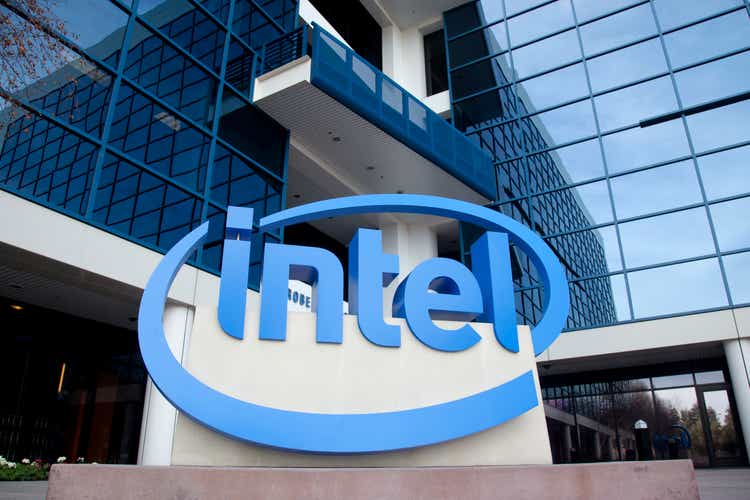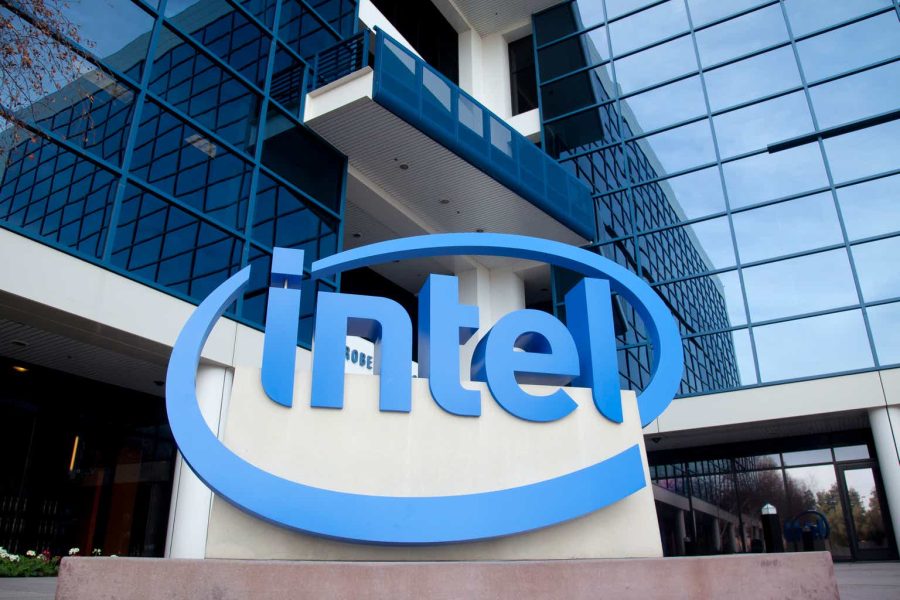Summary:
- Intel Corporation is rumored to be considering alternative options for its foundry division.
- While an appealing idea on the surface, I think this would be a mistake for the company’s long-term future.
- Continuing to execute the foundry turnaround using proceeds from the design division is the best path forward.
JasonDoiy
Amidst a bloody day in the semiconductor sector on Tuesday that saw Intel Corporation (NASDAQ:INTC) drop 10%, investors were additionally mulling rumors that Intel’s management is “weighing options” about the future of the company. There have been a few proposals mentioned, but one specific idea that caught my interest: spinning off the foundry business. In theory, separating out Intel’s chip design from its chip manufacturing business would unlock value and get both divisions back on track. My fellow Seeking Alpha author Dan Victor endorses the move in an article you can read here. In this article, I’ll discuss why I have the opposite opinion and how spinning off the foundry business would be a mistake.
To Spin Off or Not to Spin Off?
I wrote an article a couple of weeks back after INTC’s single-day 20% drop arguing that the time to buy this beaten-down stock had finally arrived, which can be read here. Part of that thesis was the turnaround prospects for Intel’s foundry business and its “five nodes in four years” (5N4Y) plan to make up ground against market leader Taiwan Semiconductor Manufacturing Company Limited (TSM). As the only major vertically integrated chipmaker, Intel’s design pipeline offers potentially unique cost savings and efficiencies when things are working well. The flip side of that is of course that when things are not going well, the different parts of Intel’s business can drag each other down, which is precisely what’s happened over the past few years.
But in response to market pressures, it appears Intel’s management is now considering spinning off the foundry business instead of investing in a turnaround. The idea would be that separating out Intel’s chip design division, which competes with companies like Advanced Micro Devices, Inc. (AMD) and is highly profitable, and its chip manufacturing business, which competes with the likes of Taiwan Semiconductor Manufacturing Company Limited (TSM) and is currently bleeding cash like a sieve, would improve the lots of both successor companies.
On the surface, this may seem like a sensible, beneficial move: Intel’s foundry unit reported a $2.8 billion loss for the most recent quarter, so spinning it off would allow the thriving chip design business to operate without the foundry albatross around its neck. I disagree with this course of action for several reasons.
The first aspect to consider is the actual goal of a spin-off, and whether Intel’s situation fits that mold. In my opinion, the goal of a spin-off is to create two entities that are greater than the sum of their parts. If they are not greater separate, then they should stay together. It seems apparent to me and most other investors that Intel’s chip design business would benefit from such an arrangement in the short term. It could bypass the foundry division’s current struggles and go to the best contract manufacturer out there.
However, this would hang the foundry business out to dry and sacrifice any potential long-term efficiencies of a vertically integrated chip-making pipeline in the scenario where the foundry business is not spun off and executes a successful turnaround. In a spin-off scenario, INTC shareholders would likely end up with ownership of one moderately successful company and one potentially worthless one. That’s not a good trade-off.
Additionally, even in the event of a foundry spin-off, Intel’s design division would almost surely be forced to lock in a large portion of its manufacturing contracts to the spun-off foundry for the first few years or longer. This is because the company has very few external customers. And, unlike if Intel stays in one piece, none of the profits from the selling of successful chips would go towards improving the foundry since it’ll be sequestered in Intel’s design division. So the chip design division would still be stuck with the same short-term problems and the foundry’s turnaround prospects would be grim.
An even bigger roadblock to a spin-off would be the lack of potential buyers. Because of investment from the CHIPS Act and the need for domestic semiconductor manufacturing, Intel’s foundry business would almost certainly be restricted from selling to any entity outside the US (like the sovereign wealth fund that bought and turned AMD’s chip manufacturing division into GlobalFoundries). There are no chipmakers of comparable size in the US with the resources or ability to execute a turnaround of this scale. The time to spin off the foundry was ten years ago when it could have been self-sustaining, but I don’t see an avenue for making this move successfully right now.
For all these reasons, I think it’s in INTC shareholders’ best interests that the company remains in one piece. By continuing to execute its turnaround plan and investing profits from the chip design business into the foundry business to close the gap with TSMC, Intel might regain the cost savings and efficiencies of a vertically integrated supply chain. I’m not saying it’s guaranteed to work, but I think the spin-off route would yield far worse results in the long run.
Investor Takeaway
I initially invested in this turnaround with the hope Intel would bite the bullet and invest heavily in the foundry business, despite the hit to the bottom line. I still believe this is the likely course of action and that the spin-off of the company’s manufacturing division is not in the cards. However, I think there are winning moves available for Intel management in terms of cost-cutting and perhaps selling Altera.
That said, if the decision is made to spin off Intel Corporation’s foundry, I will likely make my exit. I am too bearish on such a situation for me to stick around and see how it plays out. I believe investors who are pulling for a spin-off should take a step back and consider whether they truly see a successful future for Intel in that scenario.
Editor’s Note: This article discusses one or more securities that do not trade on a major U.S. exchange. Please be aware of the risks associated with these stocks.
Analyst’s Disclosure: I/we have a beneficial long position in the shares of INTC either through stock ownership, options, or other derivatives. I wrote this article myself, and it expresses my own opinions. I am not receiving compensation for it (other than from Seeking Alpha). I have no business relationship with any company whose stock is mentioned in this article.
Seeking Alpha’s Disclosure: Past performance is no guarantee of future results. No recommendation or advice is being given as to whether any investment is suitable for a particular investor. Any views or opinions expressed above may not reflect those of Seeking Alpha as a whole. Seeking Alpha is not a licensed securities dealer, broker or US investment adviser or investment bank. Our analysts are third party authors that include both professional investors and individual investors who may not be licensed or certified by any institute or regulatory body.
